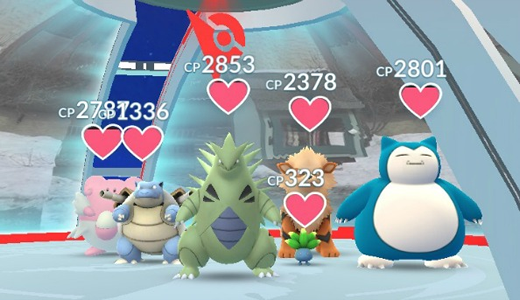Plugged In’s coverage of video games typically leans in a cautionary direction. (As does, frankly, our coverage of other entertainment media as well.) For years, our weekly Culture Clips feature has documented what social scientists have observed about the influence of video games. Though we’ve commented on both positive and negative impacts of games on young players, I think it’s safe to say that we’ve seen more of the latter.
A year ago today a new game—the first of a new kind of game, incorporating something called “augmented reality”—took pop culture by storm: Pokémon Go. The mobile app ported the popular franchise to smartphones, turning the entire world into a playing field as gamers searched high and low for Pikachu, Dragonite and Charizard out there in the great wide open.
Plugged In and Focus on the Family spent quite a lot of time last July telling you everything you needed to know about the game. (To download “A Quick Pokémon Go Guide for Parents,” go here. To find four more articles we wrote a year or so ago about the phenomenon, start here. Plugged In’s review and vodcast offer still more information and perspective on the game.)
We offered some cautionary words regarding the game’s content, as well as noting potential safety concerns fueled by stories of people having accidents because they were playing while driving or not paying attention to where they were walking.
Certainly those cautions remain valid a year later. That said, my 10-year-old son and I have spent quite a lot of time playing together over the last 12 months. The game says we’ve collectively carried my smartphone a somewhat staggering 589.7 kilometers while playing it. Those walks together, especially longer ones on the weekends, have become a sweet time for my son (and, to a lesser extent, my two daughters) and I to connect. Often when I get home from work, my guy asks, “Did you catch anything today?” (After all, the game’s slogan trumpets, “Gotta catch ’em all!”)
A year later, the company behind Pokémon Go, Niantic, has shaken things up by significantly revamping gym battles. I won’t go into all the nitty gritty details here, other than to say that the game is going to greater lengths to encourage players to team up in order to battle bigger, badder gym bosses.
The result has been a reinvigoration of a game that was already pretty revolutionary. Forbes video game and technology contributor Paul Tassi has covered the game since its inception. Writing about the new gym “raid” system recently, he noted how much Pokémon Go’s latest changes encourage a kind of community that is, he suggests, unlike just about anything else in the video game world.
In his article, “What Raids Have Done For Pokémon GO A Year After Launch Is Remarkable,” Tassi writes:
“Honestly, what raids have done for Pokémon GO is nothing short of a miracle. … I knew raids could be a good activity for the health of the game, but even as much as I cover the scene, I genuinely did not believe that GO was in a state to produce 15-20 people showing up for a raid like I saw yesterday. Granted, I live in a city, and I know the suburban/rural experience is much different and in need of improvement, but I have to reiterate with how stunning it is that GO has actually lived up to its pie-in-the-sky idea of a being continuous, social experience that brings players together outside in the real world, something I still have yet to see almost any other game reproduce.”
The concerns we noted about Pokémon Go a year ago still need to be heeded by parents. That said, I also think the benefits of playing the game with my family for a year are significant: exercise, time together and a shared passion for something that doesn’t have too many problems when played wisely.






Recent Comments